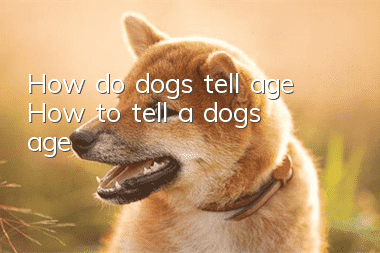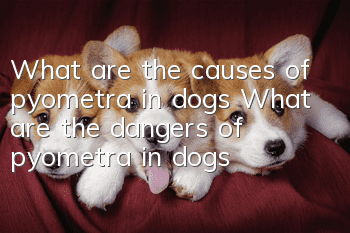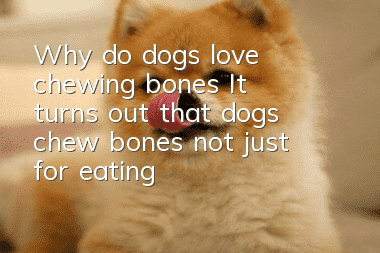How do dogs tell age? How to tell a dog’s age?

Judge age by the growth of teeth
18 to 22 days: The dog’s young teeth begin to grow. 4 to 6 weeks old: The deciduous incisors have all grown in. 2 months old: All deciduous teeth are straight, white, thin and shiny. 3 to 4 months old: Replace the first deciduous incisor. 5 to 6 months old: Replace the second and third deciduous incisors and deciduous canines. After 8 months of age: all deciduous teeth fall out and are replaced by permanent teeth. 1.0 years old: The permanent teeth are evenly long, white and bright, and the cusps on the incisors are not worn. 1.5 years old: The large peak of the first mandibular incisor wears to the level of the small peak. At this time, it is called peak obliteration. 2.5 years old: The peak of the second mandibular incisor is lost. 3.5 years old: The peak of the maxillary first incisor is lost. 4.5 years old: The peak of the maxillary second incisor is lost. 5.0 years old: The peak of the maxillary third incisor is slightly worn, and the wear surface of the mandibular first and second incisors is rectangular. 6.0 years old: The peak of the third mandibular incisor is obliterated and the canine teeth are blunt and rounded. 7.0 years old: The first mandibular incisor is worn to the root, and the wear surface is vertically oval. 8.0 years old: The first incisor of the mandible is worn and tilted forward. 10 years old: The wear surfaces of the second mandibular and first maxillary incisors are longitudinally oval in shape. 16 years old: front teeth are lost and canine teeth are incompleteYou can tell the age by observing the body shape
Young dogs have strong bones, light and agile bodies, and are lively and active. When they are 2-5 years old, their activities start to be a bit clumsy, but they are stable, safe and reliable; for older dogs over 10 years old, due to the decline in musculoskeletal health due to physical function, they begin to have loose skin, slow movements, curved or bent backs, and slow walking. , hearing loss, often forgetting things, etc.Hair reveals age
As a dog ages, the level of amino acid secretion in the body decreases, and gray and white hair easily begins to appear. That is, the hair color turns white on the sides of the nose, chin and other places in the non-gray hair area. Dogs begin to see a few white hairs at the age of 4-5, and the number increases significantly at the age of 5-6. Later, it spreads to the back, around the nose, eyelids, eyebrows, etc., and then further extends to the forehead and the external auditory canal. The hair on the entire head turns white. Dogs over 10 years old have a lot of white hair on their forehead, face and front of their head. After the age of 13, the entire head turns white. There are also some dogs whose coat color remains unchanged when they are 10-14 years old. For dogs with white, yellow and white hair or chestnut hair with white spots, the change in coat color cannot be used as an auxiliary means to judge age Random articles
- What are the shortcomings of Bago? People with light sleep should not keep it.
- Does a Golden Retriever have bloody stools? There are many reasons for Golden Retrievers to have bloody stools!
- Golden Retriever bathing precautions: owners must pay attention to these aspects
- What should I do if my Husky has ear mites? What are the serious consequences if my Husky has ear mites?
- How long does it take for a Chihuahua to be pregnant? Understand the pregnancy cycle of dogs
- What to do if Teddy has dental calculus. These methods will teach you how to remove dental calculus in your dog.
- Can dog parasites be transmitted to humans? Will the owner’s health be at risk?
- How to help dogs dissipate heat in summer - summer heat escape strategy
- Why do people keep dogs? I’m thinking about why I keep dogs.
- What kind of dogs are suitable for boys to keep? These four kinds of dogs are absolutely irresistible to boys.



